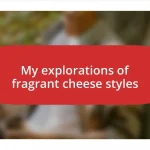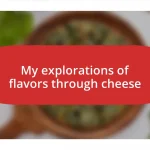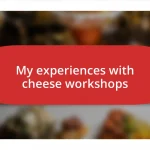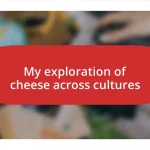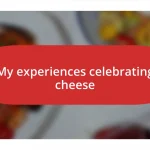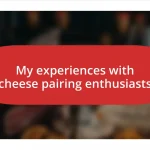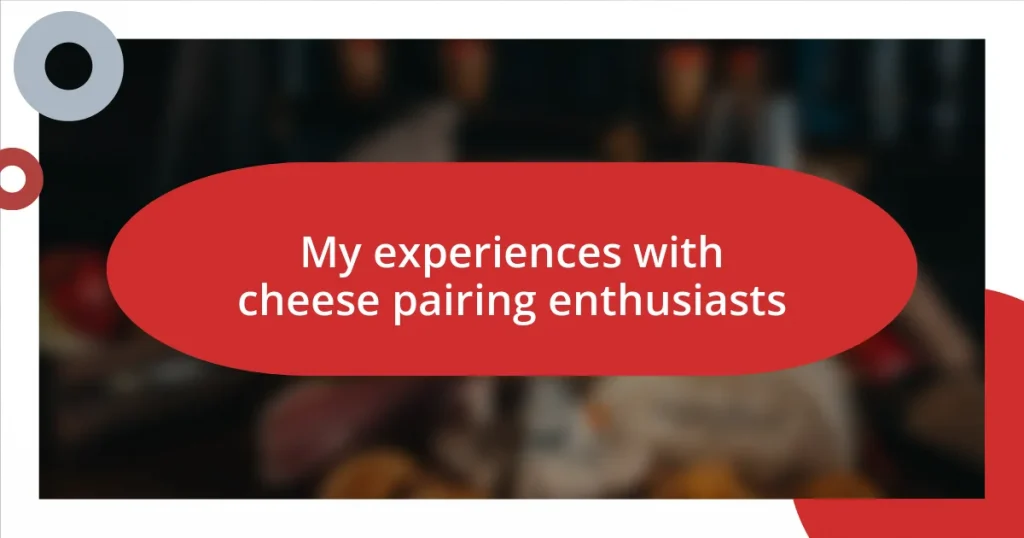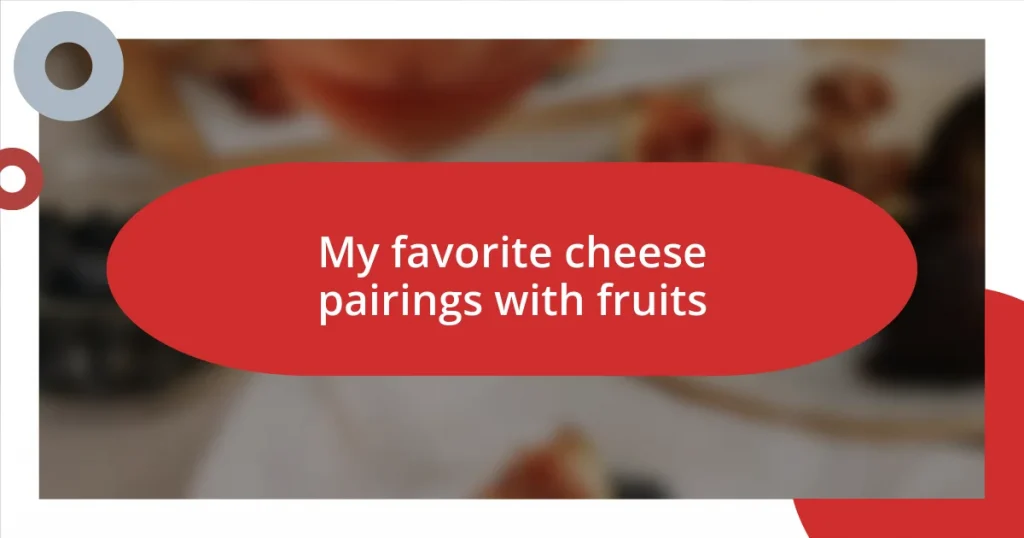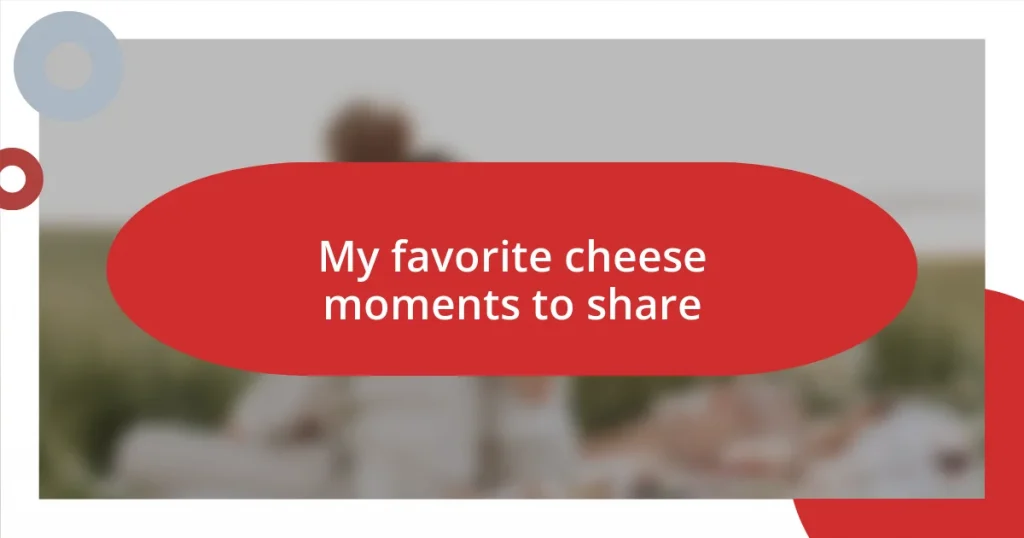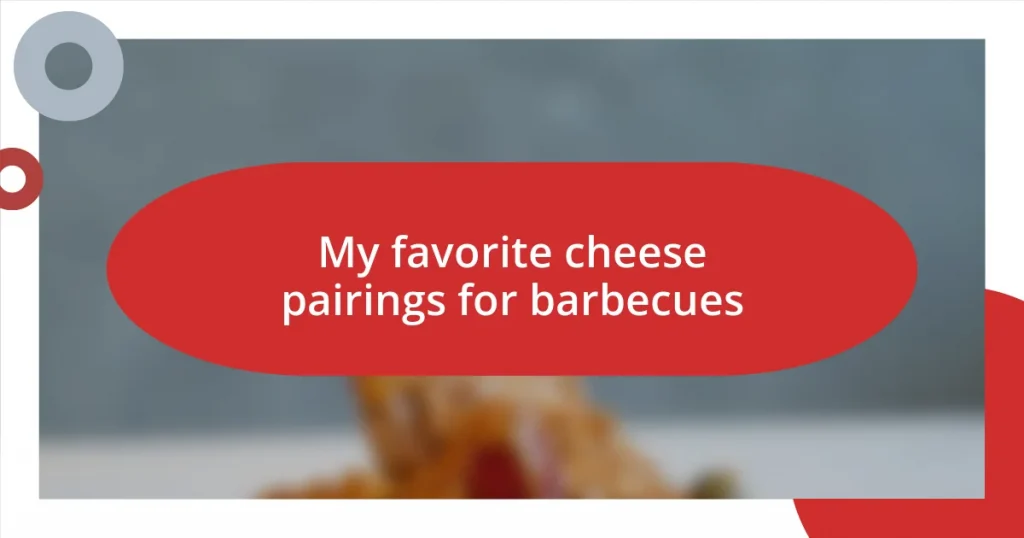Key takeaways:
- Successful cheese pairing relies on balancing flavors, textures, and aromas, enhancing the overall tasting experience.
- Texture plays a crucial role in pairings, creating contrast and affecting mouthfeel, flavor release, and visual appeal.
- Hosting a cheese pairing event benefits from thoughtful presentation, storytelling about the cheeses, and interactive tasting components to engage guests.
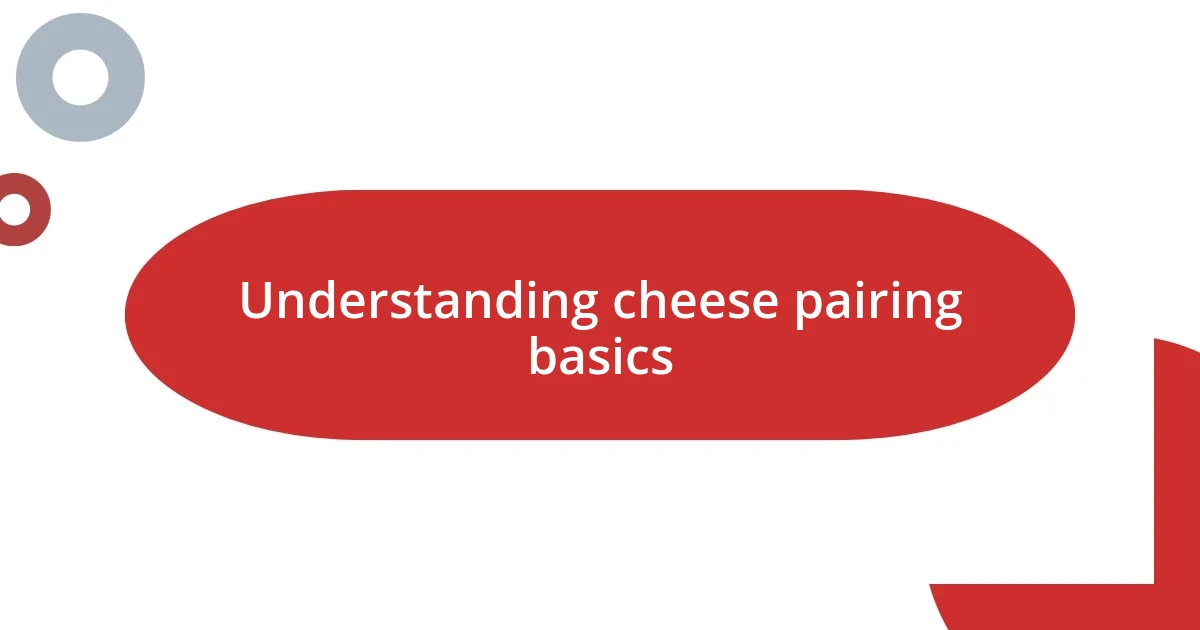
Understanding cheese pairing basics
When diving into the world of cheese pairing, it’s essential to understand the basic principles that guide successful combinations. I remember my first cheese and wine pairing event—it felt a bit overwhelming at first. But once I grasped the idea of balancing flavors, textures, and aromas, everything clicked, and I found myself savoring each bite with newfound appreciation.
One fundamental concept is the balance between creamy, tangy, and nutty cheeses with complementary accompaniments. For instance, a rich, creamy brie pairs beautifully with tart fruit preserves, creating a delightful contrast that leaves your palate excited. Have you ever paired a sharp cheddar with an apple slice? The crunch and sweetness elevate the cheese, transforming a simple snack into a sophisticated experience.
Texture plays a significant role, too. Picture a crumbly blue cheese next to a crisp cracker; the textural interplay makes each mouthful dynamic. I’ve often experimented with different crackers and fruits, and I was surprised by how a simple change can enhance or completely transform the taste. Each successful pairing feels like uncovering a little secret, which adds to the joy of enjoying cheese. How do you feel when you stumble upon a perfect match? I find it’s an exhilarating rush that keeps me exploring new combinations!
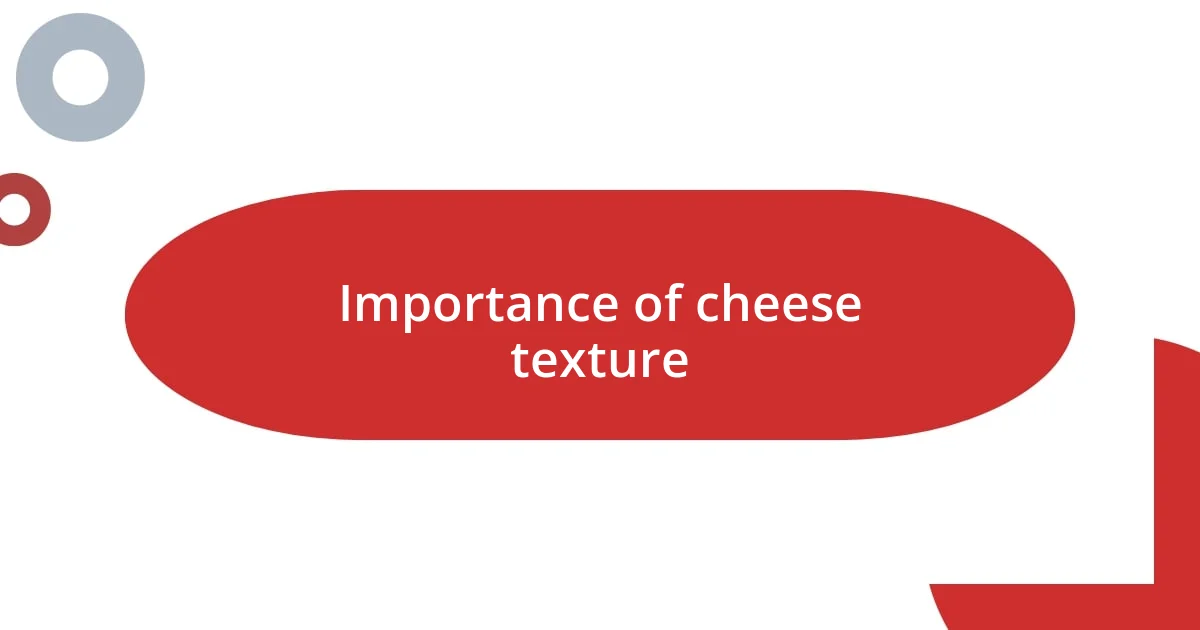
Importance of cheese texture
The texture of cheese can drastically alter the experience of pairing it with other foods. I remember one evening at a gathering where a friend introduced me to a smooth, velvety mascarpone served alongside a crunchy almond biscuit. The contrast was stunning! I realized then how important it is to consider not just the flavors but also the textures involved. It brought a whole new dimension to my cheese pairing adventures.
Here’s a quick rundown on why texture matters:
– Contrast and Balance: Combining creamy cheeses with crunchy accompaniments creates a delightful visual and sensory balance.
– Mouthfeel: The texture of the cheese changes the entire mouthfeel, making bites feel more luxurious or playful.
– Flavor Release: Creamy cheeses often release flavors more slowly, allowing you to savor each bite longer.
– Visual Appeal: Textures can enhance the visual component of a cheese board, making it more inviting.
– Personal Preference: Everyone has unique preferences when it comes to texture, affecting their overall enjoyment.
Texture is like the unsung hero in cheese pairings, quietly elevating each combination to new heights. I’ve come to appreciate how the feel of cheese can evoke different emotions and memories, influencing how I share and enjoy cheese with friends.
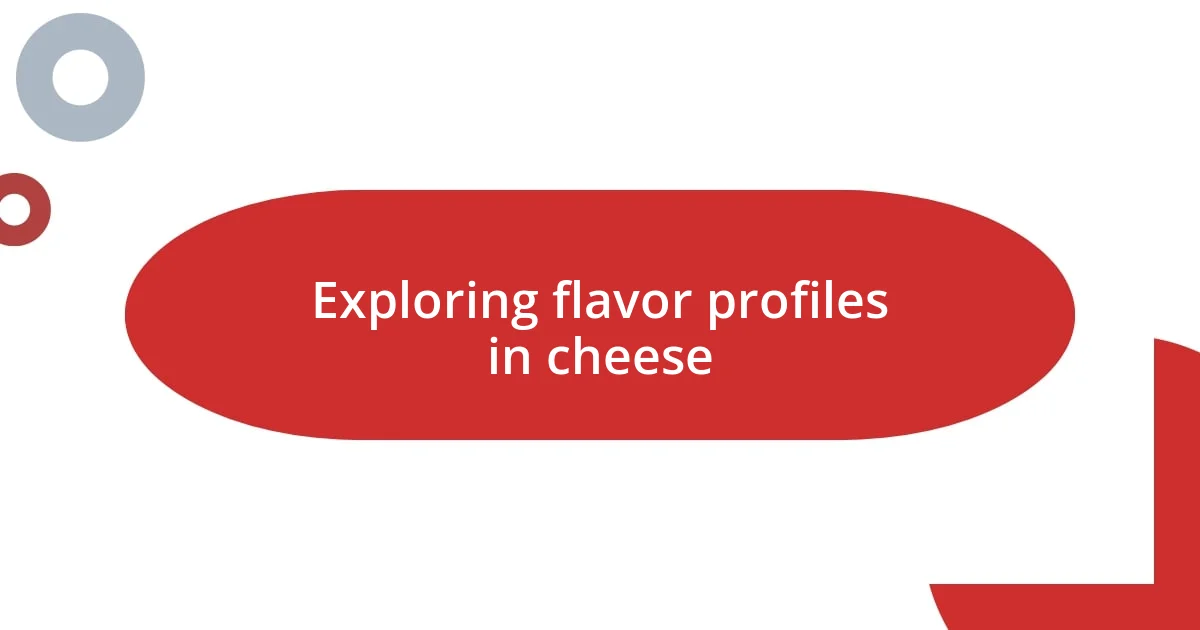
Exploring flavor profiles in cheese
Exploring the rich flavor profiles in cheese can open up a world of delightful experiences. The diversity in cheese, from a sharp aged gouda to a soft, tangy chevre, showcases an array of flavors that can be both complex and nuanced. I recall a delightful gathering where a friend brought a selection of artisanal cheeses, each paired with specific wines. The combination of a nutty cheese with a crisp white wine was an eye-opener for me, illuminating how flavors can dance together in perfect harmony. Have you ever experienced a flavor that just blew you away? That moment during that tasting is still vivid in my memory.
Moving deeper, one must consider how factors like maturation, regional influences, and milk type affect taste. For instance, a pungent Roquefort has a powerful, salty flavor that can be marvelously complemented by sweet accompaniments like honey. During one of my cheese explorations, I tried Roquefort drizzled with a few drops of wildflower honey, and the sweet-salty contrast was absolutely divine! I often think about how exploring these profiles can shift my perception of cheese; it’s more than just a snack.
It’s fascinating how certain flavor profiles lend themselves to creative pairings. Creamy cheeses often thrive paired with bright, tangy flavors, adding excitement to every bite. I remember visiting a local cheese maker who urged me to pair her fresh burrata with heirloom tomatoes and a sprinkle of sea salt. The burst of freshness and creaminess brought a summer day to life on my palate! These experiences are reminders of the joys of flavor exploration—finding what resonates with me personally and sharing those delightful discoveries with others makes each tasting feel like a shared adventure.
| Cheese Type | Flavor Profile |
|---|---|
| Brie | Creamy, buttery, mild |
| Cheddar | Sharp, nutty, earthy |
| Roquefort | Salty, tangy, pungent |
| Mascarpone | Rich, smooth, slightly sweet |
| Goat Cheese | Tart, grassy, herbal |
| Gouda | Nutty, caramel-like, sweet |
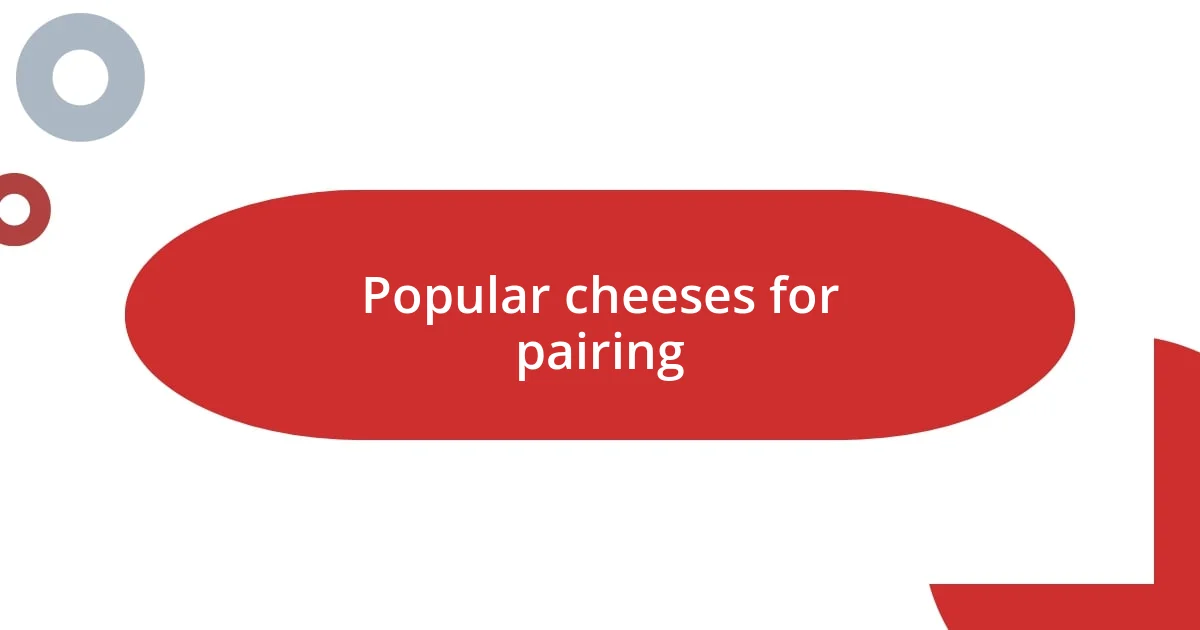
Popular cheeses for pairing
One cheese that frequently makes an appearance in my pairing adventures is aged cheddar. It has this delightful sharpness that invites robust companions. I vividly recall a winter evening with a group of friends, where we munched on a sharp white cheddar alongside some spicy apple chutney. The interplay of flavors was exhilarating! I often wonder if there’s anything more satisfying than when a cheese can uplift an unexpected pairing—what’s your favorite surprise pairing?
Another crowd-pleaser that deserves recognition is creamy brie. It’s rich and buttery, and has a way of making almost anything feel decadent. I once hosted a picnic where I brought a delectable brie, accompanied by fig jam, crusty baguette slices, and a sprinkle of fresh rosemary. The warmth of the sun, the textures at play, and the explosion of flavors were simply unforgettable. I can’t help but smile just thinking about it. This experience reminded me how brie’s buttery notes can balance out sweetness, bringing a sense of harmony to the table.
Lastly, the tangy surprise of fresh goat cheese is something I absolutely adore. I remember a summer gathering, where we paired it with some grilled peaches drizzled with balsamic glaze. The creamy tartness of the cheese against the sweetness of the peaches was euphoric! It really struck me how different flavors can elevate even the simplest of ingredients. Do you find that certain cheeses evoke memories or feelings? For me, goat cheese often brings about a sense of nostalgia for those bright summer days spent with friends under the sun.
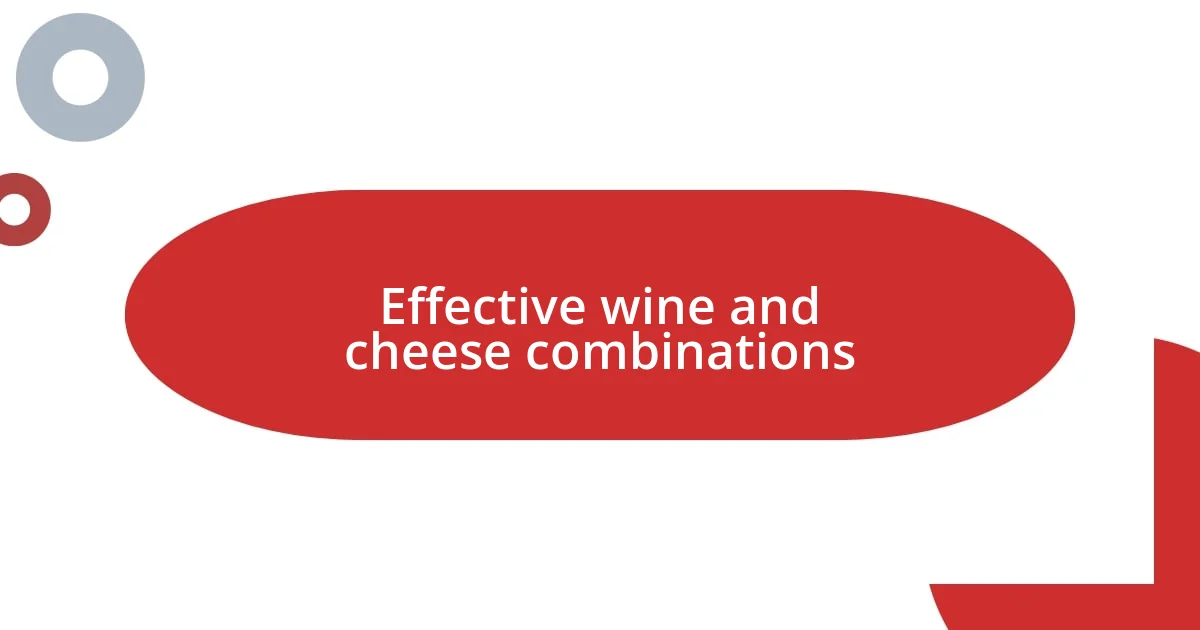
Effective wine and cheese combinations
Combining wine and cheese can transform a simple evening into a memorable experience. I distinctly remember my first encounter with a classic pairing: a full-bodied Cabernet Sauvignon with aged Gouda. The way the wine’s rich flavors accentuated the nutty sweetness of the cheese was nothing short of magical. It got me thinking—what other delightful pairings await discovery on my culinary journey?
One pairing that always surprises people is a fruity Sauvignon Blanc with creamy blue cheese. When I first tried it, I was taken aback by how the zesty acidity of the wine balanced the bold, tangy blue. It felt as if the tartness of the cheese danced with the wine, creating an exciting palate experience! This pairing made me ponder: have you ever discovered an unexpected match that turned into a favorite?
I’ve also found joy in pairing sparkling wine with soft cheeses like Brie. During a cozy get-together, I served a brie topped with truffle honey and paired it with a crisp Prosecco. The bubbles from the wine lifted the velvety creaminess, while the sophisticated sweetness of the honey added a gourmet touch. In those moments, I realize how excellent pairings can elevate not just the flavors, but the atmosphere of the gathering itself. Have you ever felt that magic with a perfect wine and cheese combo? It’s truly a shared experience worth exploring.
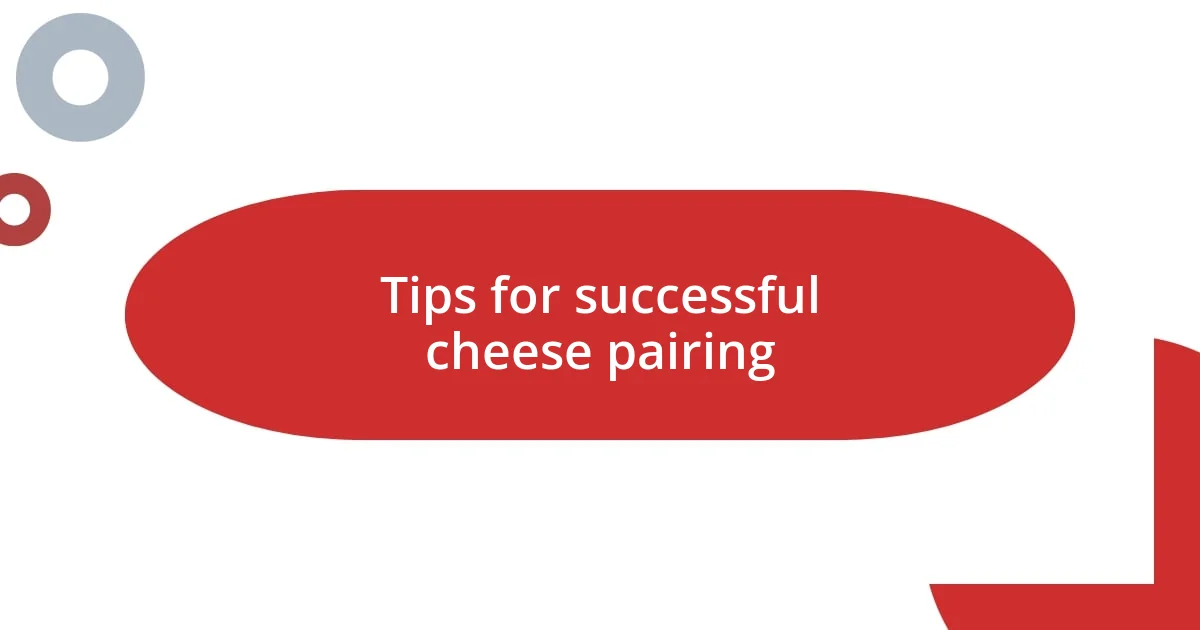
Tips for successful cheese pairing
Choosing the right cheese for pairing can be both an art and a science. I’ve discovered that contrasting textures often create a delightful balance. For instance, when I mismatched a crumbly aged feta with honeyed walnuts, the result was a simple yet mesmerizing dish. Have you found that mixing textures in your pairings opens up new flavor dimensions?
Another tip is to consider the strength of your flavors. I once paired a mild ricotta with spicy chorizo, thinking it would be too much—but it turned out to be a joyful meld of creaminess contrasting with heat. This experience taught me that sometimes, boldness pays off! Do you lean towards safe combinations, or do you venture into the intriguing territory of opposites?
Don’t forget about garnishing your cheese presentations with complementary items. At a gathering, I arranged a cheese board featuring rich gorgonzola alongside ripe pear slices and toasted pecans. The sweet and nutty elements harmonized so beautifully with the sharpness of the gorgonzola that it felt like a mini celebration on each plate. How do you usually enhance your cheese pairings? An imaginative garnish can elevate the experience in ways you might not expect.
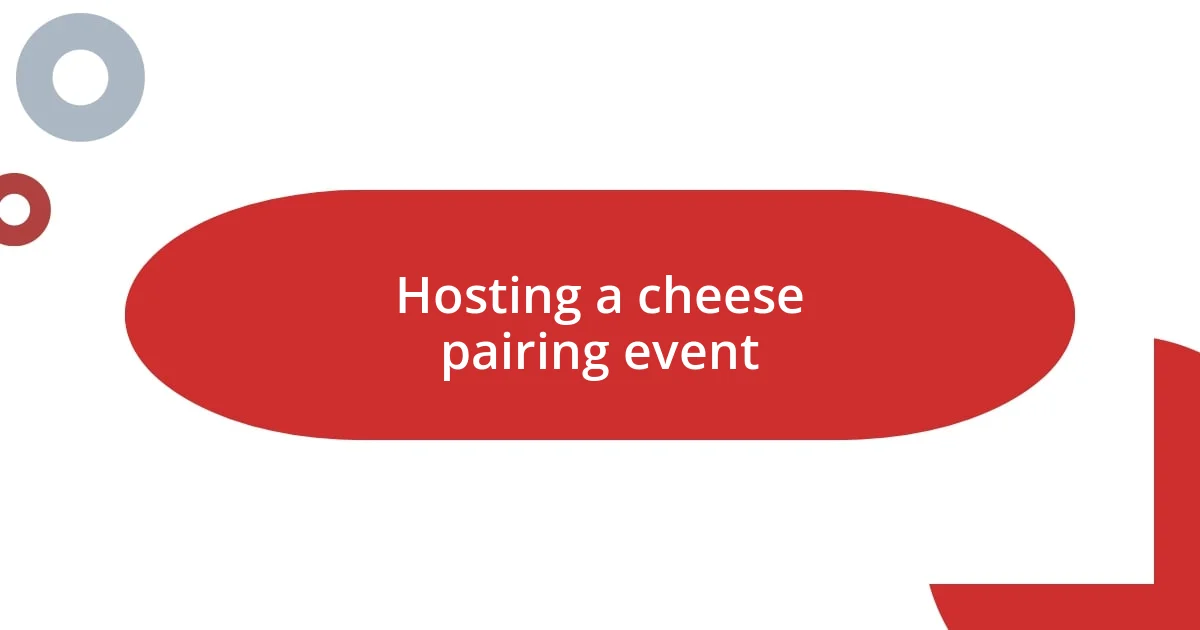
Hosting a cheese pairing event
When planning a cheese pairing event, the layout can dramatically influence the mood. I recall a cozy gathering I hosted where I positioned a long table adorned with a colorful array of cheeses and accompaniments. The visual appeal sparked immediate conversations, making guests eager to experiment. Have you ever noticed how a well-arranged table can create an inviting atmosphere, encouraging exploration?
I’ve found that storytelling adds a unique flair to the event. During one of my get-togethers, I shared the backstory of each cheese, from the farm where it was produced to its distinctive aging process. Guests were not only tasting flavors but also connecting emotionally with the origins of the cheeses. Have you thought about how sharing these stories could enhance the experience for your guests?
Lastly, don’t underestimate the power of guided tasting. At one event, I introduced an interactive component by providing tasting notes for each pairing. As we moved through the selections, I asked questions to get everyone involved. “What flavors are you noticing? How does this cheese change when paired with this wine?” The lively discussions that ensued created a sense of community among the guests. Have you experienced the joy of collective discovery at your gatherings? It truly brings people together in special ways.



